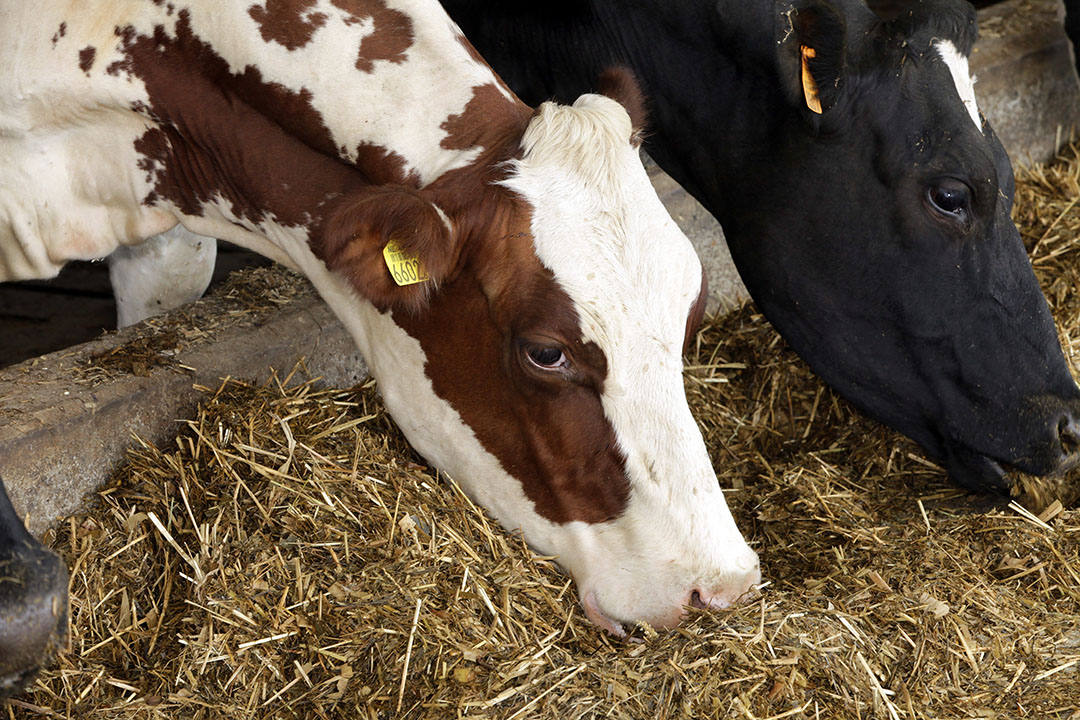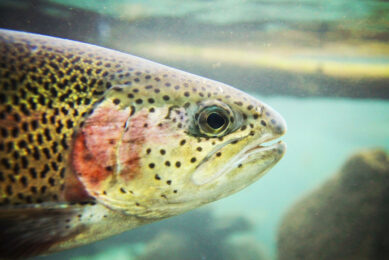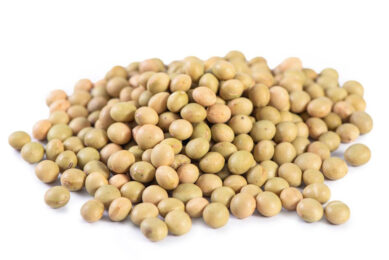Replacing soybean meal with microalgae in cow diets

Microalgae in the diet of dairy cows show similar results as soybean meal, Finnish researchers showed. They tested 2 types of microalgae and a mixture of the 2 on milk yield and feed intake.
Due to their extremely rapid growth rate and the fact that cultivation can take place in marginal or non-arable land, it can be an interesting protein source for livestock animals. The production costs of microalgae are still high, but the situation may change in the near future due to e.g. technical development and different policy interventions such as incentives and carbon taxation.
Substitute for soybean meal
Previous experiments to substitute rapeseed meal with microalgae didn’t show increased results on dry matter intake (DMI) or milk production. Finnish researchers hypothesised that microalgae may perform more favourably in comparison to soybean meal and thus an experiment was conducted to evaluate different microalgae species as protein supplements in the nutrition of lactating dairy cows in comparison to soybean meal. The aim was to study the effects of the new protein source on dairy cow performance, milk fatty acid composition and N utilisation. The researchers hypothesised that substitution of soybean meal by microalgae would decrease DMI owing to the poorer palatability of microalgae and especially the long chain PUFA in N. gaditana. In addition, S. platensis would result in higher milk production than C. vulgaris and N. gaditana due to differences in cell wall composition and digestibility; and inclusion of N. gaditana in the diet would increase the concentration of omega-3 fatty acids (FA) in milk.
4 isonitrogenous protein supplements
The study was conducted at the University of Helsinki research farm in Helsinki, Finland. In the experiment, 4 multiparous lactating Finnish Ayrshire cows (112 days in milk) were used and fed separately a fixed amount of cereal-sugar beet pulp based concentrate (12.5 kg/d) and grass silage ad libitum. Experimental treatments consisted of 4 isonitrogenous protein supplements: soybean meal (SOY), Spirulina platensis (SPI), Chlorella vulgaris (CHL) and a mixture of C. vulgaris and Nannochloropsis gaditana (1:1 on dry matter (DM) basis; CHL-NAN). Feed intake and milk yield of the cows were recorded daily throughout the experiment but only measurements on day 15 to 20 of each period were used for statistical analysis. Also blood, urine and faeces samples were collected.
Increased silage intake and similar milk yield
The current study demonstrated the suitability of non-defatted and protein-rich microalgae for the nutrition of lactating dairy cows. Microalgae inclusion in the diet did not affect total amount of DMI but changed the composition of DMI by increasing silage intake, and thus lead to decreasing proportion of concentrate in the diet. Despite of poorer palatability of microalgae concentrates, microalgae diets resulted in milk and ECM yields similar to soybean meal, with spirulina having numerically the highest yields. This may be attributed to increased methionine intake on microalgae diets. No differences in apparent digestibility of nutrients were found between dietary treatments. Owing to spirulina, microalgae diets increased milk fat concentration either via more acetate intensive rumen fermentation or increased body lipid mobilisation. Nannochloropsis inclusion in the diet resulted in most favourable omega-6:omega-3 ratio for human nutrition and fourfold increase in milk EPA concentration without adverse effects on milk fat production. Milk FA results imply that the unsaturated FA metabolism of cows fed unicellular microalgae might differ from soybean meal. The results of this current experiment suggest that microalgae are at least as good protein feed as soybean meal in the nutrition of lactating dairy cows especially if palatability of microalgae diets can be improved.











